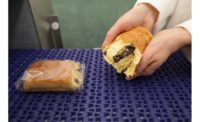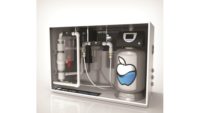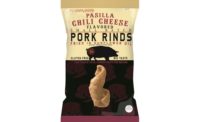EnWave, based in Vancouver, Canada, offers technology and equipment to the snack industry that can help producers create interesting and new products. We were able to speak to Brent Charleton, senior vice president, business development, about EnWave's technology and what’s new for the company.
Liz Parker: When was your Radiant Energy Vacuum (REV) released?
Brent Charleton: The continuous, commercial-scale iterations of REV technology were developed through the early 2000’s. The first deployment was in 2009 to Milne Fruit Products, a major food processor located in Nampa, Idaho (www.milnemicrodried.com). That being said, the commercial inflection point for the adoption of REV technology began in 2014 when four machines were purchased. Thus far in 2017, EnWave has sold nine machines and has a total of twenty-two machines deployed to numerous companies spanning, Europe, Australia, South America, Central America and North America. REV’s strong competitive position has surfaced significant value for twenty-two commercial licensees who have secured rights to use REV technology for the exclusive production of specified products within a defined geographic region. In exchange for these exclusive rights, each commercial licensee has agreed to pay a modest royalty tied to the success of their REV-dried products back to EnWave.
LP: How does REV work, exactly?
BC: REV technology achieves low-temperature, accelerated dehydration by applying a vacuum within the main chamber of the machinery to lower the atmospheric pressure; therefore, lowering the boiling point of water. Depending on the product load, a specific amount of microwave energy is introduced to homogenously remove moisture at controlled low temperatures where the vapor pressure will equal the atmospheric pressure created. It is challenging to maintain an even microwave field under vacuum. EnWave’s intellectual property protects several innovations (both process and method of use patents) that can solve this potential problem. REV is the only known scalable, continuous and reliable vacuum-microwave technology.
LP: You have 4 REV platforms (nutraREV, powderREV, quantaREV, and freezeREV). Which is best for the snack industry?
BC: In regards to our REV platforms, freezeREV and powderREV are still in the developmental phase and both are focused on pharmaceutical and biological material processing. Our core competency is food processing. We offer nutraREV (drum-based system) and quantaREV (tray-based system) as variations to transport the organic material through a highly-controlled vacuum-microwave environment. Both nutraREV and quantaREV are both scalable. The machinery ranges from 10kW to 300kW in rated power. The water removal capacity is 1kg per hour for every 1kW in rated power. Typical processing times range between 45 minutes – 2 hours.
LP: What kind of foods do you work with in the snack food market?
BC: EnWave has successfully collaborated with its licensees to develop a diverse range of snack products. REV technology can be used to produce shelf-stable yogurt, cheese, fruit, vegetable, bean, meat and starch-based products for both toddlers and adults. REV offers its user the ability to produce clean-label, unique products that can’t be replicated using other technologies, thus providing our licensed partners with distinct competitive advantages.
REV-dried yogurt snacks can retain high, claimable levels of probiotic activity and offer varying textures, from crunchy to chewy with several flavor profiles. Ultima Foods recently secured an exclusive license to use REV in Canada for yogurt snacks. There are several additional licenses being negotiated.
Other innovative near-term commercial products include bean-based cluster snacks, meat-based ‘chip’ snacks and starch-based, puffed fruit and vegetable snack products. REV’s unique ability to remove moisture homogeneously from foodstuffs at low, controllable temperatures allows for novel and varied product attributes to be created.
LP: How can the EnWave technology help snack producers create interesting & new products?
BC: EnWave has developed extensive know-how regarding vacuum-microwave technology and imparts this knowledge through close new product development collaboration. EnWave has strong food science and engineering groups that work together with each licensed and prospective partner. REV machinery is available for research and development use at the Company’s pilot plant facilities in Vancouver, Canada and can also be placed at partner facilities via rental arrangements. EnWave’s team loves nothing more than working with motivated companies to develop new and innovative products.
LP: EnWave’s flagship product is Moon Cheese, which is available at Starbucks. Any plans to broaden that line and/or introduce new varieties soon?
BC: EnWave’s core competency is the construction and deployment of commercial-scale, continuous vacuum-microwave equipment, as well as collaborative new product development. The formation of NutraDried LLP and subsequent launch of Moon Cheese was a ‘field of dreams’ scenario. At the time, EnWave had limited commercial installations and there was a need to de-risk the technology. Essentially, EnWave had to build out its own successful production facility to compel prospective partners to license REV technology.
Luckily, Moon Cheese has been a significant success story with annual revenues growing over the past three years from less than $300k to north of $5 million. Moon Cheese is now also available in Target, CVS, Rite Aid, REI and the aforementioned Starbucks among other outlets. NutraDried LLP is in the process of developing several new varieties for potential launch in 2018. Some possibilities include Moon Cheese with either pesto or Sriracha flavor profiles, as well as Caprese and Mediterranean mixes.
Moon Cheese’s success helped EnWave to attract eight additional licensees of REV technology, each launching their own iterations in varied jurisdictions, including Canada, Chile, Costa Rica, Portugal, Spain, Turkey, Greece and Australia.








